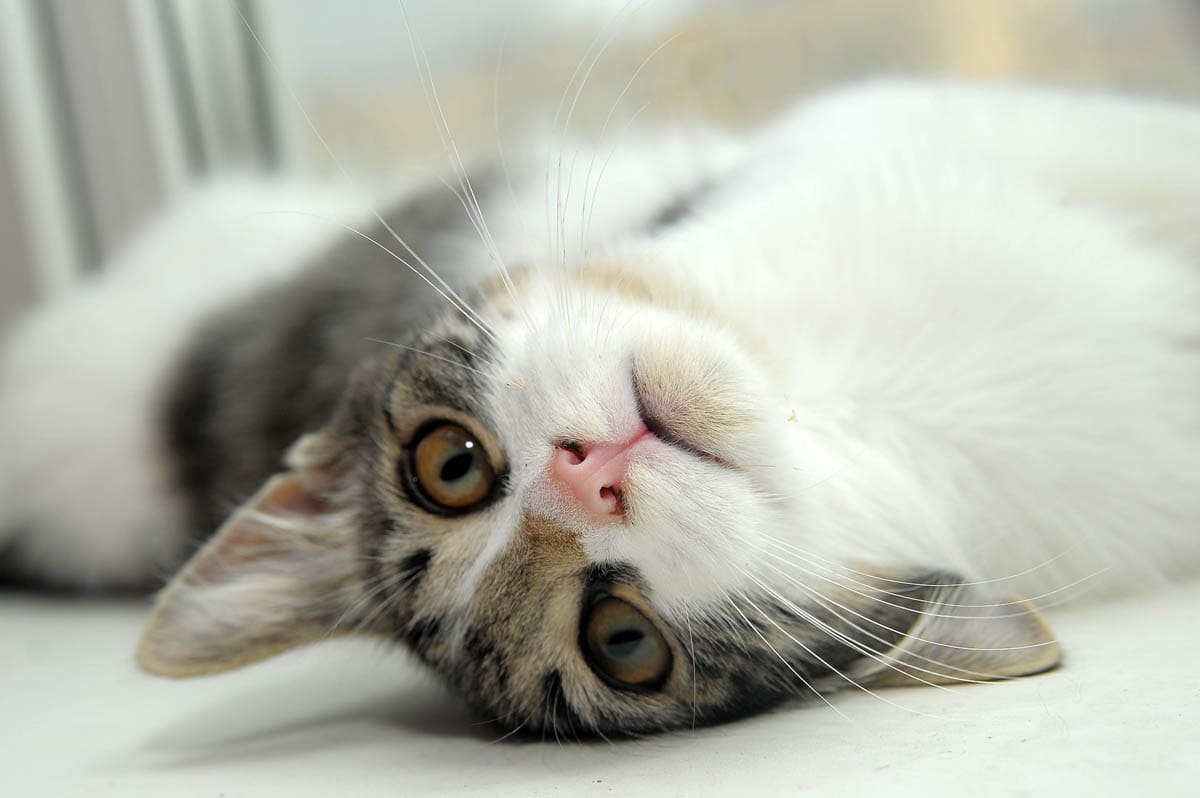Head shaking is not as common in cats as it is with dogs and when it does occur it almost always relates to a problem with the ears.
Most causes of head shaking relate to discomfort due to itching and inflammation. As the cat scratches his ears and shakes his head, he risks further aggravating the problem by inducing an ear hematoma, which is a blood-filled pocket caused by a broken blood vessel in the ear.
Causes
Ear mites
One of the most common causes of head shaking is due to ear mites. These tiny, spider-like parasites live in the ear causing intense itching and discomfort to your cat. Typical symptoms include head shaking, a reddish/brown discharge from the ear, odour, coffee-like grounds in the ear and bleeding.
Treatment:
Anti-parasitic medication to kill the mites, removal of the discharge and possibly steroids to reduce inflammation and antibiotics to treat a secondary bacterial infection. Wash all pet bedding at the same time.
Ear infection
Ear infections are usually bacterial but occasionally fungal. Usually, inflammation (due to other causes) leads to scratching, which can damage the delicate tissues of the ears and result in bacteria or yeast infecting the damaged areas. Exacerbating factors can include hyperthyroidism, excessive production of ear wax, warm and humid conditions. Symptoms of ear infections include scratching, head shaking, unpleasant odour, ear discharge, redness, and inflammation.
Treatment:
Daily cleaning to remove excess discharge followed by topical antibiotics or anti-fungal medication. It is also important to find and address the underlying cause.
Foreign object in the ear
Grass seeds or other material trapped in your cat’s ear can result in an uncomfortable feeling leading to head shaking in an attempt to dislodge the offending item.
Treatment:
Removal of the object with forceps if it is within reach and/or rinse out the ear (irrigation) with a saline solution Antibiotic ointment will then be applied to the affected area.
Allergies
There are four types of allergies to affect cats, contact, inhalant, food and insect (especially fleas), most cat allergies manifest as intense itching, especially around the head and neck.
Treatment:
Find and remove the cause of the allergy where possible. The veterinarian may be able to rule in and out possible causes based on the occurrence (is it seasonal or all year round) as well as a food elimination trial and skin patch tests to check for reactions to common allergens.
Sometimes the cause can not be determined or eliminated (such as pollens). Antihistamines can block the effects of histamine and steroids can reduce inflammation.
Insect bites or stings
Most insect bites and stings occur on the face and paws of your cat. Bee stings, and ant bites being the most common culprits. Some cats will have a localised reaction to the bite or sting resulting in itching, swelling and possibly head shaking.
Treatment:
Most insect bites will not require treatment. Itching and swelling are managed by either applying an ice pack, local steroids or antihistamines. In rare cases, the cat can have an anaphylactic reaction, which is a life-threatening allergic response. Urgent veterinary attention is needed to treat this.
Polyps
These are benign growths of the ear and nose arising from the mucous membranes. Symptoms can vary depending on the location of the polyps but may include coughing, sneezing, head tilt, drooping eyelid, ear infection, and nasal discharge.
Treatment:
Surgical removal is the most effective way to treat polyps in cats. There are several surgical options available which include traction-avulsion, ventral bulla osteotomy, myringotomy, lateral ear resection, ear canal ablation combined with lateral bulla osteotomy, and laser debulking.

